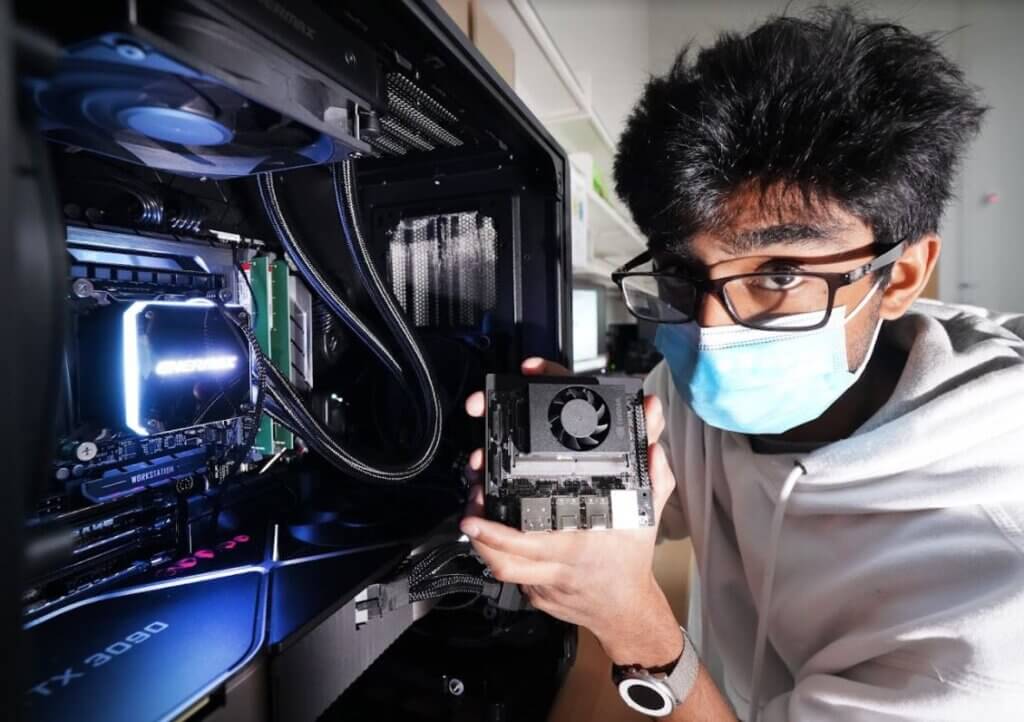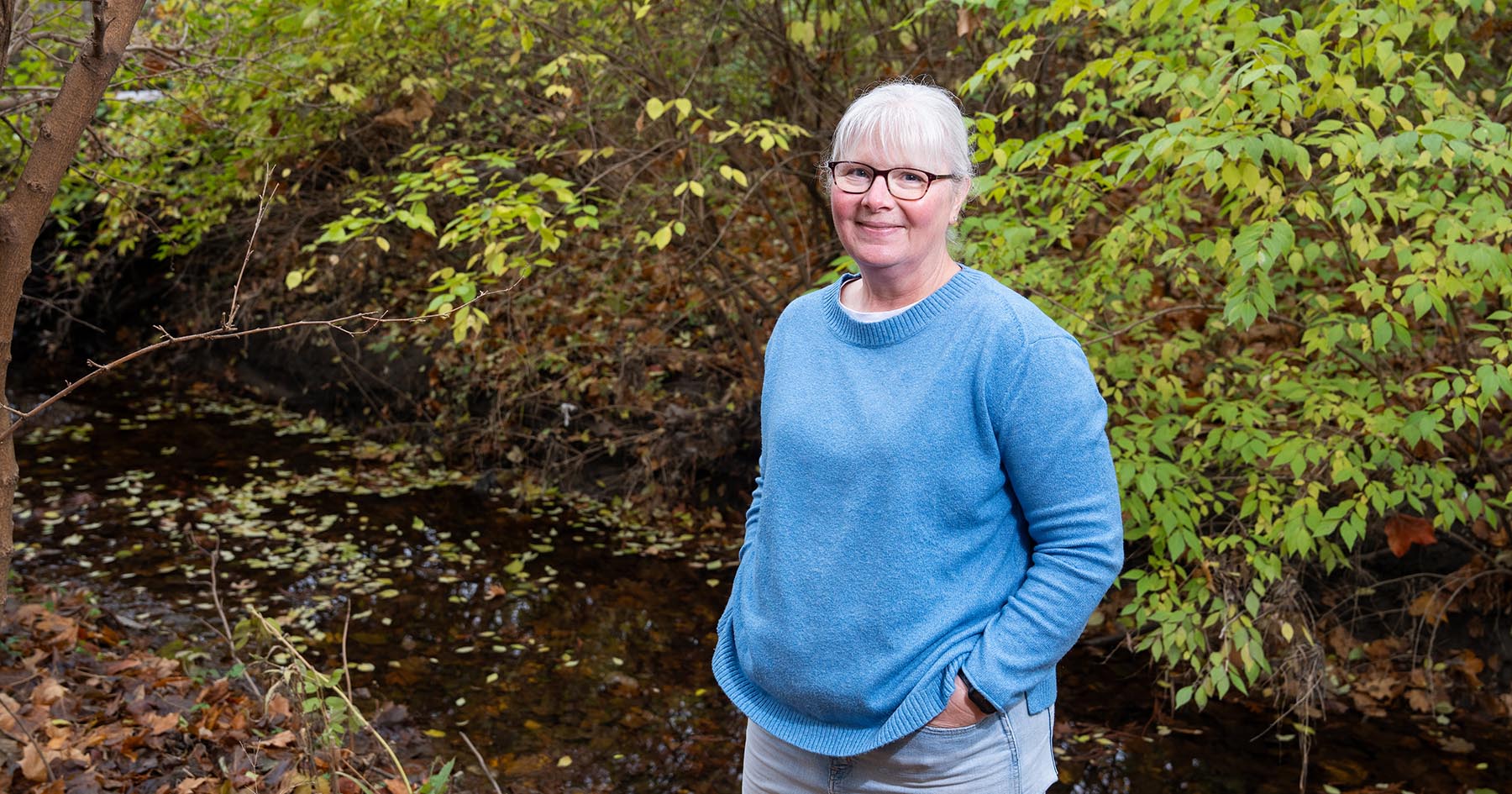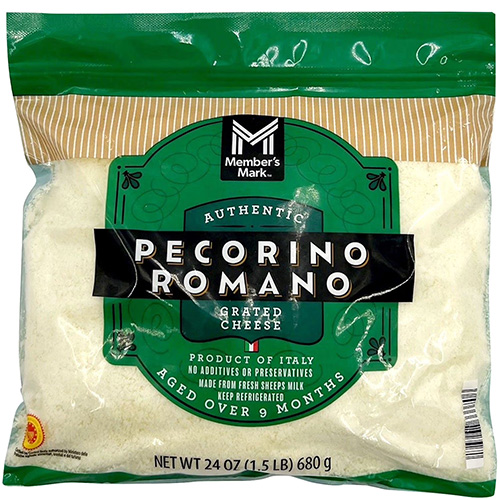The 'Internet of Small Things' will power digital agriculture
R
overs patrol rows of crops and drones monitor from above on farms across the U.S. But to realize the full potential of digital agriculture, these systems need to become much more efficient, scalable, and resilient.
Data engineering expert Somali Chaterji is pursuing these advances with support from a National Science Foundation Computer and Information Science and Engineering Directorate (CISE) CAREER Award.
Chaterji, assistant professor of agricultural and biological engineering, earned the $550,000 award for her proposal titled “Robust and Adaptive Streaming Analytics for Sensorized Farms: Internet of Small Things to the Rescue.” She named the project Sirius, after the brightest star visible from Earth at night.
“I want this project to shine a light on cyber-physical systems and make them more capable,” said Chaterji, who is a member of Purdue’s Center for Resilient Infrastructures, Systems, and Processes (CRISP) and The Open Ag Technology and Systems Center (OATS). “By 2025, there will be 38.6 billion connected devices worldwide – held in the palm of our hand, flying in the air, roving on the ground, or embedded in the soil. We want to make these devices not just data collectors, but intelligent devices performing their own data analysis and making quick, local, and efficient decisions.”
Chaterji’s goal is to create what she calls “The Internet of Small Things,” a network of small devices to make data collection, analysis, and actuation more sustainable, she said. To achieve that goal, Chaterji is working to incorporate machine learning applications and on-device computation into a variety of devices used in computer vision with applications in agriculture, surveillance, and automation.
For example, through Sirius technology, drones will determine their own optimal trajectories, reducing wasted battery power and recharge time; and rovers moving around a field sensing soil and plant conditions will be able to determine and apply the precise amount of water and nutrients needed.
Perhaps most importantly, Sirius will enable the devices and network to refine and reduce data transmission, which accounts for the bulk of energy consumption by networked devices, through on-device intelligence, she said.

“Our innovation distributes the computation and each device can decide to transmit only the useful quanta of data instead of a giant data deluge,” she said. “Improved efficiencies like these will benefit the farmers and the environment by reducing the frequency of charging these devices and decreasing the reliance on cloud computation and data centers.”
Chaterji also is director of the Innovatory for Cells and Neural Machines (ICAN) at Purdue and is on the leadership team for the Wabash Heartland Innovation Network (WHIN).
“Drones and static and mobile sensors gathering data about moisture, temperature, carbon and pH levels, and plant health are out there on the farms,” she said. “This technology will bring them together as a network and optimize the data analysis and use of computational resources. Multiple farms could be linked to share data as well, while preserving privacy, leveraging decentralized learning on mobile devices.”
Chaterji said the big question she wants to answer is: As these devices become smaller and multipurpose, can I approximate the heavyweight data analysis algorithms so that they fit the devices?
“These small devices don’t have the memory or computing power of a data center. Instead of up-sizing the devices, let’s right size the algorithms,” she said. “This approach will be faster and will decongest the network channels, which is increasingly a problem with the ubiquity of mobile sensing devices. The network can adaptively decide how much to compute on the sensor, how much on the edge devices, and how much on the cloud.”
The Sirius project also aims to create a network that can monitor its own devices. Using the cyber fingerprint of each device, the system can determine if a device is failing or is compromised.
“This was an idea raised by Microsoft, and my collaboration with Microsoft Azure exposes me to the latest in anomaly detection software, as well as to edge computing infrastructure,” she said.
Ranveer Chandra, managing director at Microsoft Research, praised the Sirius project in a press release, saying, “This work is innovative as well as timely. Somali is in a unique position to bring together her insight in IoT and federated data analytics to the application domains of drone surveillance and sustainable agriculture.”





